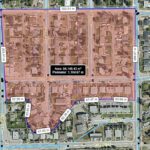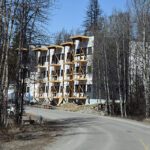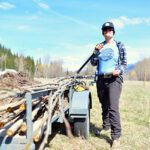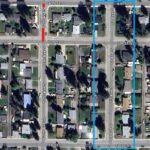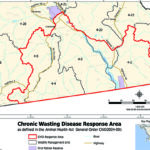Home »

Summer 2021 saw drop in groundwater levels in Basin
Hot and smoky conditions in the Columbia Basin and elsewhere in British Columbia were not the only signs of quickening climate change impacts this summer.
Groundwater data collected from some of the aquifers being monitored as part of Living Lakes Canada (LLC)’s Columbia Basin Groundwater Monitoring Program showed a decrease in water levels when comparing this July to last July.
In particular, water levels in two aquifers in the East Kootenay, one in Windermere and one in Cranbrook, were lower by approximately 0.75 metres and 0.80 metres respectively. A third aquifer located in Shoreacres near Playmor Junction in the West Kootenay was lower by approximately one metre.
An aquifer is an underground layer of broken rock, gravel, sand or silt that contains groundwater.
“Groundwater is used in the Columbia Basin for domestic, agricultural, industrial, and commercial purposes, and helps maintain water levels and water quality in wetlands, streams, rivers, and lakes. Groundwater is vital for maintaining healthy ecosystems, including habitat for fish, waterfowl, and wildlife,” said Carol Luttmer,
Groundwater Monitoring Program Manager for LLC. “Monitoring groundwater levels is key to understanding what is happening underground. Increasing our knowledge about groundwater systems informs sustainable water management to ensure the needs of people and nature can be met.”
Careful management and allocation of groundwater is becoming increasingly important as populations continue to grow, demand increases, and climate change impacts intensify. The Groundwater Monitoring Program works with well owners (ranging from private landowners to local government to First Nations) who volunteer their wells for monitoring.
Currently, the program is monitoring 22 Volunteer Observation Wells across the Columbia Basin and recently published a memo with graphs of water levels for aquifers with more than one year of data. To determine if changes in aquifer water levels are associated with drought or other pressures, or if they are within natural
variations from year to year, long-term monitoring and analyses are needed.
Groundwater is the most extracted natural resource from the planet's subsurface, the importance and urgency of groundwater protection is recognized globally. In early September, the International Association of Hydrogeologists released the Sao-Paulo-Brussels Groundwater Declaration (of which LLC is a signatory), inspiring actions needed to further the understanding, the careful use and protection of groundwater and aquifers throughout the world. The declaration states that because groundwater is a critical resource but hidden from view, there must be an effort by governments, hydrogeologists, NGOs, and all of society to “make the invisible visible.”
The LLC Groundwater Monitoring Program complements the Provincial Groundwater Observation Well Network, which has a limited number of observation wells in the Basin. If you would like to monitor groundwater in your area, contact Carol Luttmer at [email protected] .
To learn more about the program, visit https://livinglakescanada.ca/project/columbia-basin-groundwatermonitoring-program/
Lead image: Using a water level tape to collect manual water level measurements in Cranbrook. Living Lakes Canada photo
Living Lakes Canada
